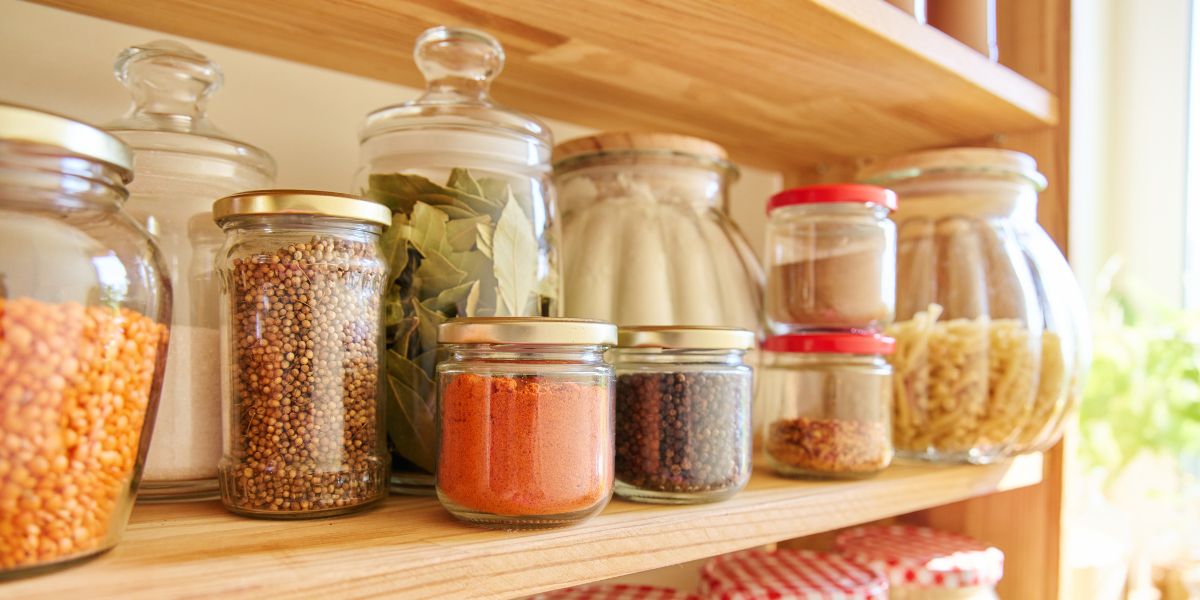
When it comes to storing food at home, ensuring proper organization and labeling is paramount for freshness and preventing waste. Grouping similar items together, labeling shelves accordingly, and strategically placing frequently used items can streamline your kitchen efficiency. But what about those items that are often forgotten in the back of the fridge or pantry? Stay tuned to discover some key tips that will transform your food storage game and keep your kitchen running smoothly.
Proper Pantry Organization
To keep your pantry organized efficiently, group similar items together by category and label each shelf accordingly. This simple step will save you time and effort when searching for ingredients or snacks.
When organizing your pantry, consider placing frequently used items at eye level for easy access. Items that are used less often can be stored on higher or lower shelves.
Utilize clear containers or bins to store loose items like pasta, rice, or snacks. This not only keeps your pantry looking tidy but also makes it easier to see when you're running low on specific items.
Consider using shelf risers to maximize vertical space and make smaller items more visible. Additionally, invest in a lazy Susan for corner shelves to easily access items without having to dig through the back.
Refrigerator Storage Tips
Consider rearranging your refrigerator shelves to optimize storage space and keep your food fresh longer. Start by designating specific areas for different types of food. Store raw meat, poultry, and seafood on the bottom shelf to prevent any drips from contaminating other items.
Place dairy products and eggs on the middle shelves where the temperature is most consistent. Utilize the crisper drawers for fruits and vegetables, adjusting the humidity levels accordingly.
Condiments, sauces, and drinks can be stored on the door shelves where the temperature tends to fluctuate.
To maintain food safety, ensure your refrigerator is set to the appropriate temperature, ideally below 40°F (4°C). Regularly check for any expired or spoiled items and promptly discard them. Keep leftovers in airtight containers and label them with dates for easy identification.
Avoid overpacking your fridge to allow for proper air circulation, which helps in maintaining the freshness of your food. By following these refrigerator storage tips, you can effectively organize your fridge and prolong the shelf life of your groceries.
Freezer Guidelines
Optimize the organization of your freezer to maximize storage efficiency and preserve food quality effectively. Arrange items with the oldest dates in front for easier access, helping you rotate foods and prevent items from getting buried and forgotten.
Label and date all containers and packages to track expiration dates and maintain a first in, first out system. Keep a list of freezer contents on the door to quickly identify what you have and avoid unnecessary purchases.
Utilize airtight containers or freezer bags to prevent freezer burn and maintain freshness. When freezing liquids, leave some space at the top of the container to account for expansion.
Store similar items together, such as meats in one section and frozen fruits and vegetables in another, to streamline meal prep. Regularly declutter your freezer by using up older items or donating them to minimize overcrowding and maintain optimal airflow.
Handling Fresh Produce
Maximize the freshness and longevity of your fresh produce by implementing proper handling techniques. Start by washing your hands thoroughly before and after handling fresh produce to prevent any contamination. When selecting produce, choose items that are firm, without bruises or cuts, and free from mold. Store fruits and vegetables separately, as they emit different gases that can cause spoilage.
To maintain freshness, store most fruits and vegetables in the refrigerator crisper drawer. Items like tomatoes, bananas, and potatoes are exceptions and should be stored at room temperature. Avoid washing produce before storing it, as moisture can promote mold growth. Instead, wash fruits and vegetables just before consuming them. Leafy greens should be washed, dried, and stored in a breathable container with a paper towel to absorb excess moisture.
Regularly check your fresh produce for any signs of spoilage and remove any items that are going bad to prevent the spread of mold or bacteria. By following these handling tips, you can ensure your fresh produce stays fresh and safe for consumption.
Food Storage Containers
Choose appropriate food storage containers that are airtight and BPA-free to maintain the freshness and quality of your stored food items. Airtight containers help prevent moisture and air from reaching your food, which can lead to spoilage. Opt for BPA-free containers to ensure that no harmful chemicals leach into your food, especially when storing acidic or fatty foods.
When selecting food storage containers, consider the material they're made of. Glass containers are a great choice as they're nonporous, meaning they won't absorb food odors or stains. Additionally, glass containers are safe to use in the microwave, dishwasher, and freezer. Plastic containers are lightweight and convenient but make sure they're labeled BPA-free to avoid any health risks.
For optimal organization, choose clear containers that allow you to easily see the contents inside. This can help you keep track of your food inventory and reduce food waste caused by forgotten items. Remember to label your containers with the date the food was stored to ensure you consume items before they expire. By using the right food storage containers, you can prolong the shelf life of your food and maintain its quality.




